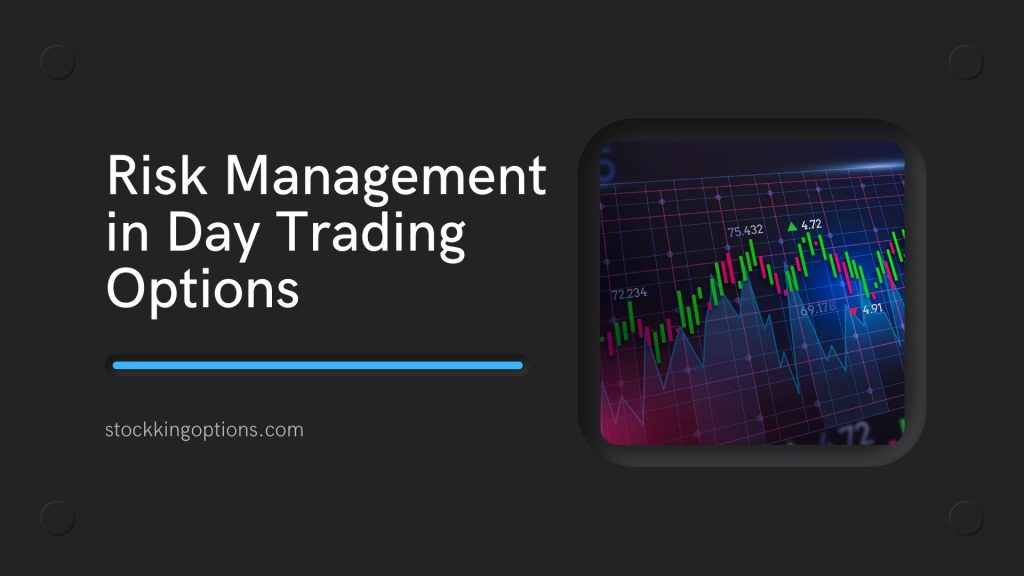
Importance of Risk Management for Day Traders
Day trading in the options market can be an exciting and fast-paced way to make money, but it also comes with a high level of risk. As a day trader, your goal is to take advantage of short-term price movements in the market to generate profits. However, with this high potential for reward also comes a significant amount of risk when day trading options.
This is where risk management becomes crucial for day traders. It refers to the strategies and techniques used by traders to minimize their potential losses and protect their capital while maximizing their gains. In this section, we will discuss the importance of risk management for day traders and how it can make or break your success in the options market.
1. Protects Your Capital: Day trading involves making multiple trades within a single day, which means that you are exposed to various risks throughout the trading session. Without proper risk management, one wrong move could wipe out your entire account balance. By implementing sound risk management practices, such as setting stop-loss orders and limiting position sizes, you can protect your capital from being wiped out by one bad trade.
2. Helps Control Emotions: The fast-paced nature of day trading often leads to emotional decision-making, which can result in impulsive trades driven by fear or greed. Risk management techniques help control these emotions by providing a clear plan for managing potential losses and staying disciplined even during volatile market conditions.
3. Reduces Overtrading: Day traders are susceptible to overtrading – taking on too many positions at once without proper analysis or following their rules. Once you have met your quota, stop there, take the wins, and move on to the next day.
Analyzing Volatility in Options Trading
Options trading can be an extremely lucrative form of day trading, but it also comes with its own unique set of risks. One of the key factors that must be carefully considered and managed when trading options is volatility.
Volatility refers to the degree of fluctuation in price movements for a particular asset or market. In the case of options trading, volatility is particularly important because it directly affects the value of an option contract. When volatility increases, so does the value of an option, while decreasing volatility can lead to a decrease in an option’s value.
There are several types of volatility that traders should be aware of when analyzing their options trades:
1. Historical Volatility: This is a measure of how much an asset’s price has fluctuated over a given period in the past. It can provide insight into how volatile an underlying asset has been and may help predict future price movements.
2. Implied Volatility: Unlike historical volatility, implied volatility looks at current market expectations for future price fluctuations. It is derived from option prices and reflects the collective sentiment and expectations of traders in the market.
3. Market Volatility: This type of volatility refers to overall market conditions and can have a significant impact on individual stock prices and options contracts.
Analyzing these different types of volatility is crucial for risk management in day trading options because it allows traders to make more informed decisions about which contracts to trade and at what prices.
To effectively analyze volatility, traders often use technical indicators such as Bollinger Bands or the Finonnaci Retracement tool to check on price action.
Setting Stop-Loss and Take-Profit Levels for Option Trades
When it comes to day trading options, risk management is crucial in order to protect your capital and maximize profits. One key aspect of risk management is setting stop-loss and take-profit levels for your option trades.
Stop-loss levels are predetermined price points at which you will exit a trade in order to limit potential losses. Take-profit levels, on the other hand, are price points at which you will exit a trade to lock in profits. These levels should be carefully chosen based on market conditions, volatility, and your own risk tolerance.
Here are some tips for effectively setting stop-loss and take-profit levels for option trades:
1. Understand the underlying asset: Before even considering setting stop-loss or take-profit levels, it is important to thoroughly understand the underlying asset that you are trading options on. This includes its historical performance, current market trends, and any upcoming events or news that could affect its price movement.
2. Consider volatility: Volatility refers to the degree of variation in an asset’s price over time. High volatility can result in large swings in both directions, making it important to set wider stop-loss and take-profit levels to accommodate these fluctuations. On the other hand, low volatility may require tighter stop-loss and take-profit levels.
3. Use technical analysis: Technical analysis involves studying charts and indicators to identify patterns and trends that can help with decision making. By using tools such as support and resistance levels, moving averages, and trend lines, you can see where price action will move to and have a great chance of success.




